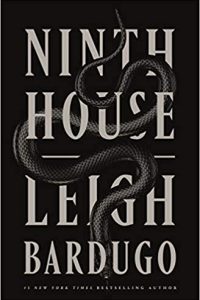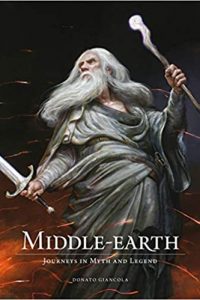Cecelia Holland reviews Kim Stanley Robinson
 At the beginning of Stan Robinson’s great new novel of the stone age, the men of his clan take the boy Loon to a mountaintop and sing him a little song:
At the beginning of Stan Robinson’s great new novel of the stone age, the men of his clan take the boy Loon to a mountaintop and sing him a little song:
This is how we always start
It’s time to be reborn a man
Give yourself to Mother Earth
She will help you if you ask
Then they strip him naked and send him off into a stormy, freezing wilderness for two weeks on his own.
This stretch of writing is among Robinson’s very finest, incorporating both his passion for the wild world and his buoyant optimism that humans have a place in it. The immediacy and vigor of this writing is thoroughly satisfying. Against the wind, the rain, his hunger, and the hunger of predators, Loon has only curiosity, resourcefulness, and energy, and every act of survival is creative. And the chapter leads you into a broader triumph: the evocation of a way of life as rich and resourceful as our own, but more spiritual, and, in the long run, more sustaining.
The lives of Stone Age men and women have long fascinated writers. The sensational discovery of Paleolithic cave paintings has fired our imaginations since we first became aware of their existence, and the relationship between the Neanderthal and the Cro-Magnon people haunts us: perhaps that was the original sin, exterminating the Neanderthals? Vardis Fisher’s The Golden Rooms, William Golding’s The Inheritors, Jean Auel’s endless and awful Children of Earth series, Elizabeth Marshall Thomas’s eerie Reindeer Moon: all draw on our fascination with these earliest recognizable humans – as if, going back to the beginning, we can finally figure out who we are.
What we are looking for (always) is ourselves. And Loon is one of us. The tight-knit community of his clan includes us. He is struggling through his adolescence, finding love, defying authority, struggling to fathom his own abilities. He falls in love, loses his love, and sets out to find her again. He masters the tool kit of the Paleolithic, as we learn to use the same tools in new materials. He struggles with his vocation, which his foster father Thorn is determined he shall find: to be a shaman, to mediate between the world of his clan and the spiritual world. And he paints.
When, in 1880, the first cave paintings came to light, they were widely thought to be hoaxes. Paleolithic man, the snobby 19th century believed, was a mere ape, nowhere near clever enough to do something so extraordinary. But the more we have learned about early men and women, the more extraordinary they do seem – inventive and passionate and ambitious. They saved us. There were far fewer of us then, and the world was harsh; these people got us through that testing time. And there is the magnificence of their art.
Robinson is working with a specific cave, Chauvet, in France, discovered less than 20 years ago, a splendid subterranean gallery of horses, cave lions, panthers, hyenas, and bison. These paintings, economic and evocative, fascinate because they are so terribly old, and because they seem so utterly modern. Online, we can see the very picture Loon is painting, the horses in their row, tossing their heads, and through this novel we can experience the intellectual act of creating it. So we collapse time, as if I put my hand against that painted hand and for an instant become that other person.
Writing historical fiction is a rite of memory, of recovery – to imagine what the few surviving data can no longer tell us: how it was to live in another time. Stan Robinson has always been a writer of huge ambition – he owns Mars, after all – and in taking on this theme, he has another huge purpose: not to tell us what this most ancient of human worlds was, but somehow, through the act of fiction, to make us remember. This is what we were once. This is our true nature, indivisible from all nature; what it means to be human, then, and now.








